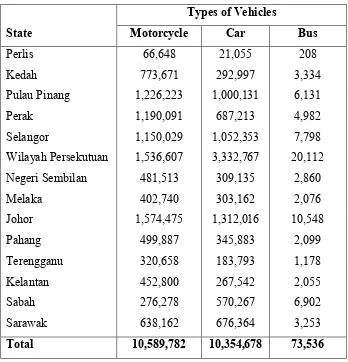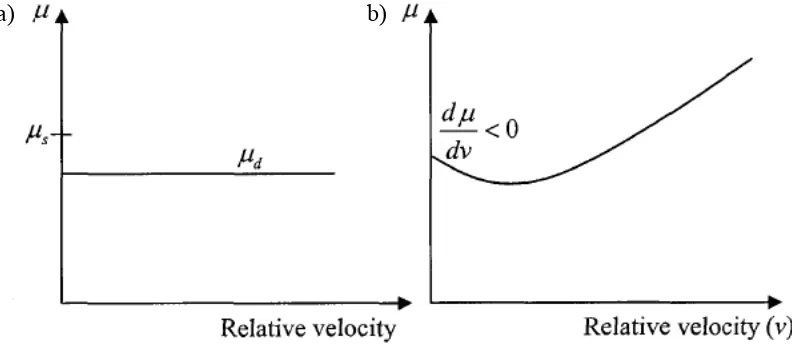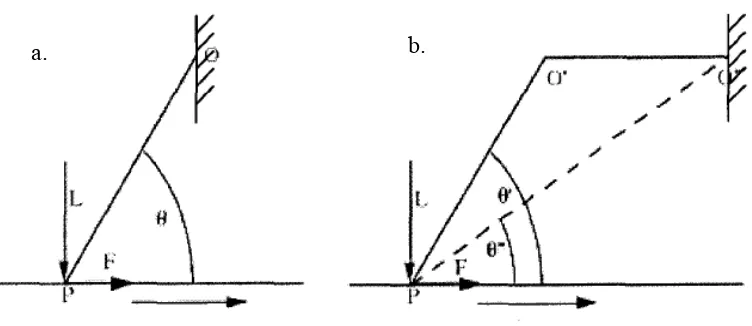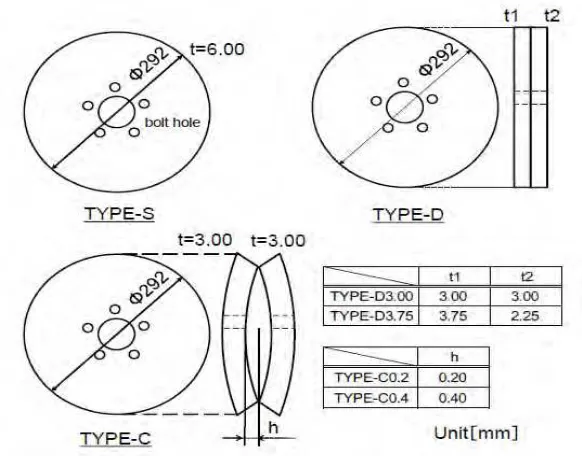FINITE ELEMENT (FE) ANALYSIS OF DRUM BRAKE SYSTEM
EFARIANI BINTI ABDUL RAHIM
SUPERVISOR DECLARATION
“I hereby declare that I have read this thesis and in my opinion this report is sufficient in terms of scope and quality for the award of the degree of
Bachelor of Mechanical Engineering (Automotive)”
Signature : ……….
Supervisor: Dr. Mohd Azman Bin Abdullah
ii
FINITE ELEMENT (FE) ANALYSIS FOR DRUMBRAKE SYSTEM
EFARIANI BINTI ABDUL RAHIM
This Report is submitted to Faculty of Mechanical,
Universiti Teknikal Malaysia Melaka
In partial fulfillment for Bachelor of Mechanical (Automotive)
Fakulti Kejuruteraan Mekanikal Universiti Teknikal Malaysia Melaka
iii
DECLARATION
“I hereby declare that the work in this report is my own except for summaries and quotations which have been duly acknowledged.”
Signature: ………..
Author : Efariani Binti Abdul Rahim
iv
v
ACKNOWLEDGMENT
First of all, gratefulness of thanks to our Creator, “Allah” for this continuous blessing, which make this work become easier and can be finished in time.
I would like to express my sincere gratitude for my supervisor Dr. Mohd Azman Bin Abdullah for his valuable guidance, support and encouragement throughout this project.
I would like also to thank my Industrial Training supervisor, Dr. Abdul Rahim Bin Abu Bakar for all of the advices that he had shared with me especially on how we should done our job effectively. Besides, he also introduced and teaches me a lot on how to use ABAQUS software. The experiences that I gained from my Industrial Training are one of the precious things in my life and I will try my best to always “do the best” in everything that I do.
Last but not least, to my parents, my sibling, my niece and nephew, my friends, and all of my classmates, thank you for brighten my day and being with me all the time when I need help.
vi
ABSTRACT
vii
ABSTRAK
viii
TABLE OF CONTENTS
CHAPTER TITLE PAGE
DECLARATION iii
DEDICATION iv
ACKNOWLEDGEMENT v
ABSTRACT ABSTRAK
vi vii
TABLE OF CONTENTS viii
LIST OF TABLES x
LIST OF FIGURES xi
1 INTRODUCTION 1
1.1 Introduction 1
1.2 Problem Statement 2
1.3 Objective of Study 4
1.4 Scope of Study 4
1.5 Thesis Organization 5
2 LITERATURE REVIEW 6
2.1 Introduction 6
2.2 Brake Squeal Mechanisms 7
2.2.1 Friction Characteristic 7
2.2.2 Sprag-slip Model 8
2.2.3 Self- excited Vibrations (mode Coupling)
10
2.3 Conditions Under Which Squeal Occurs 11
ix
2.4.1 Experimental Study 11
2.4.2 Finite Element Method (FEM) Study 13
2.5 Brake Squeal Suppression Methods 14
2.6 Analyses of Brake Squeal Noise Using FEM 16
2.6.1 Complex Eigenvalue Analysis 16
2.6.2 Types of damping 19
2.7 Summary 22
3 METHODOLOGY 23
3.1 Introduction 23
3.2 Research Design 24
3.3 Finite Element Model Generation 25
3.3.1 FE Modal Analysis 26
3.3.2 Stability Analysis 27
3.4 Insulator Configurations 28
3.4 Summary 31
4 RESULT AND DISCUSSION 32
4.1 Introduction 32
4.2 Preliminary Result 33
4.3 Brake Insulator Result 37
4.4 Summary 43
5 CONCLUSION AND RECOMENDATION 44
5.1 Conclusion 44
5.2 Recommendation 45
REFERENCES
APPENDIX A APPENDIX B
APPENDIX C
x
LIST OF TABLES
TABLE NO TITLE PAGE
1.1 Total Motor Vehicles by Types and State, Malaysia,
2012
3
3.1 FE model parts with their specification 27
3.2 Different Insulators Configurations 29
4.1 Data collected for ʆ=40 rad/s and ʅ=0.4 40
4.2 Data collected for pair of aluminium and ABS 40
xi
LIST OF FIGURES
NO TITLE PAGE
2.1 Friction Coefficient Models (Huang, 2005) 8
2.2 Sprag-slip model, (a) single strut rubbing against
moving surface (b) sprag-slip system (Huang, 2005)
9
2.3 Configuration of brake discs (Kubota et al., 2010) 12
2.4 Shim Configurations (Mahboob et al., 2010) 14
2.5 Interaction of two masses with friction effect
included (Tricheˆs et al., 2008)
17
3.1 Research flow chart 24
4.1 Comparison baseline models with and without slip
rate
34
4.2 Relationship between frequency and brake squeal
generation
35
4.3 Relationship of frequency and brake squeal
occurrence for different speed
37
4.4 Stability analysis of drum brake system for
insulator with different types of iron material and rubber
38
4.5 Stability analysis of drum brake system for
insulator with different types of iron material and
rubber
1
CHAPTER 1
INTRODUCTION
1.1 Introduction
2
There are few terminologies for brake noise such assqueal, groan, chatter, judder, moan, hum and squeak that can be found in literature. However, the
terminology that often be used is squeal. The phenomenon of squeal is probably the most common, disturbing to users and environment, and its cost the manufacturer in term of warranty. There are no precise definitions for brake squeal, but it is
frequently agreed that squeal occurred at frequency above 1000 Hz (Kinkaid et al.,2003).
There are a few approaches used in predicting the probability of the squeal occurrence which are theoretical, experimental and Finite Element (FE) approaches. Besides, there are several methods also proposed to suppress or reduce the squeal occurrence which are; structural modifications, active control and adding damper (Kinkaid et al.,2003). From the three methods, adding damper is the most efficient method and it may be applied by changing the material with high damping material or by adding insulator to the pad or shoe, which depend on what type of brake that will be used.
1.2 Problem Statement
3
Table 1.1: Total Motor Vehicles by Types and State, Malaysia, (Road
Transport Department, Malaysia, 2012).
State
Types of Vehicles
Motorcycle Car Bus
Perlis 66,648 21,055 208
Kedah 773,671 292,997 3,334
Pulau Pinang 1,226,223 1,000,131 6,131
Perak 1,190,091 687,213 4,982
Selangor 1,150,029 1,052,353 7,798
Wilayah Persekutuan 1,536,607 3,332,767 20,112
Negeri Sembilan 481,513 309,135 2,860
Melaka 402,740 303,162 2,076
Johor 1,574,475 1,312,016 10,548
Pahang 499,887 345,883 2,099
Terengganu 320,658 183,793 1,178
Kelantan 452,800 267,542 2,055
Sabah 276,278 570,267 6,902
Sarawak 638,162 676,364 3,253
Total 10,589,782 10,354,678 73,536
Besides, the development to suppress and eliminate the squeal produced in the brake has been the target of many researchers for recent years. However, there is no fully solution for this problem and the squeal only can be suppressed but cannot be eliminated.
4
1.2.1 Objectives of Study
The objectives of this project are to reduce the brake squeal occurrence and to determine the effectiveness of brake insulator by using different types of materials in reducing the squeal occurrence.
1.2.2 Scope of Training
There are a few scopes that had been arranged for student to finish this project during the training period:
i. Finite element (FE) model of a baseline drum brake unit.
A 3D (CAD) model of a drum brake system shall be developed that based on a real brake system. This CAD model will be used in the finite element (FE) software called ABAQUS to create a baseline brake FE model. The component and assembled FE model will be analysed using modal analysis to predict its dynamic properties such as modal frequencies and modes shapes.
ii. Stability analysis of the baseline FE model.
5
iii. Finite element (FE) model of brake insulators.
6
CHAPTER 2
LITERATURE REVIEW
2.1 Introduction
Brake squeal is a phenomenon of dynamic instability that occurs at one or more of the natural frequencies of the brake system. The research on this field had started since 1950’s where the busses was banned from using the road because producing a squealing or noisy sound from the brake (Crolla and Lang,1991). Research in this field is still active until now. From the start, research on brake squealing has been carried on using theoretical, experimental and computational approaches. Theoretical approaches are used to analyze the mechanism of squeal by setting up simple mathematical for brake resonance.
7
section will present more about the squeal mechanisms, brake insulator, and analysis study for this project.
2.2 Brake Squeal Mechanism
It is very important to understand what are the mechanisms involved because it can be considered as the first step to solve brake squealing problem. Unfortunately, there is no a full of solutions for this problem until now and this is come from the lack of understanding brake squeal generation. However, there are a few mechanism have been proposed to explain squeal generation. Some of the basic mechanisms are illustrated in the following:
2.2.1 Friction Characteristic
This is one of the early mechanism trays to explain the squeal generation, where it assumes that the friction properties of the contact area are the reason squealing occurred. There is a relationship between coefficient of friction, μ and the relative velocity, νs and depend on this relationship, there are two basic characteristic: First, the Coulomb characteristic as shown in Figure 2.1 (a), consists of a specific static coefficient of friction and a lower constant dynamic coefficient of friction. This friction model results in stick-slip oscillations of the single degree-of-freedom model of the elastic system with such an interface. These motions are characterized by intermittent periods of sticking and slipping between the two surfaces (Huang, 2005).
8
negative damping, which can lead to self-excited vibrations that are unstable oscillations in the single degree of freedom models.
However, these hypotheses could not explain some characteristics found to exist during squeal. For example, with the same friction materials and under similar operating conditions, one brake may squeal and the other may not. It is believed that since brake systems are much more complex, these friction characteristics are not sufficient and even not necessary for squeal to occur (Huang, 2005).
2.2.2 Sprag-slip model
Sprag-slip model was introduced by Spurr to describe a geometric coupling hyphothesis in 1961. Consider a strut inclined at an angle θ to a sliding surface as shown in Figure 2.2 (a) (Spurr, 1961). The magnitude of the friction force is given by:
(2.1)
Where µ is coefficient of friction and L is the load. The friction force will approach infinity as µ approaches cot θ. When µ = cot θ, the strut locks and the surface cannot
Figure 2.1: Friction Coefficient Models (Huang,2005)
a)
9
move. Spurr’s sprag-slip model consisted of a double cantilever as shown in Figure 2.2 (b).
It was hypothesized that the arm O'P will rotate about an elastic pivot O' as P
moves under the influence of the friction force F once the locking angle has been reached. Eventually 0"P replaces O'P, and the inclination angle is reduced to 0’’. Then O'P swings back, and oscillation occurs.
An important aspect of this model is that it requires at least two degrees of freedom, and a sufficient amount of friction at the interface. No consideration of the negative slope feature of the friction-velocity curve is required for the occurrence of squeal. Though this model is very simplistic and is not well suited to model a complex brake system, it inspired many researchers that friction-induced geometric coupling may be important in explaining squeal (Huang, 2005).
Figure 2.2: Sprag-slip model, (a) single strut rubbing against moving surface
(b) sprag-slip system (Huang, 2005).
10
2.2.3 Self-excited vibration (friction induced vibration)
Variable friction forces may lead to friction-induced oscillations. Researchers recognized that variable friction forces occur not only when the coefficient of friction is varied, but also when the normal forces at the friction interface are varied due to geometric coupling. Even if the coefficient of friction is constant, variable friction forces are still possible and are sufficient to cause instability.
Mathematically, this geometric coupling leads to non-symmetric “stiffness coupling” in the equations of motion in contrast to the common symmetric coupling due to structural stiffness. Under some conditions for such asymmetric systems, a pair of natural frequencies may merge, and then become complex with further changes in system parameters. Hence modal coupling provides a mechanism for the beginning of squeal oscillations.
The beginning of oscillations due to modal coupling can be predicted with linear analysis of models having two or more degrees of freedom, only taking constant levels of friction into account. Moreover, the influence of structural properties on the stability as many experiments have shown is included in this mechanism. In recent years, the idea of modal coupling has been adopted by most researchers and widely used to model the brake systems and predict the onset of squeal.
11
2.3 Conditions Under Which Squeal Occur
According to the investigation that was done, drum brake squeal is excited more at low than at high speeds and squeals occur only over limited ranges of pressures and are most common at temperatures below 100C. Mainly the brake noise is generated by the sliding phenomenon of the brake lining in the lower range of sliding speeds and during the course of running-in of the lining (Felske et al., 1980).
Among the components of the brake system, drum is most generally the outstanding part which generates the vibrations causing the noise of the drum brake assemblies. In some papers it is appreciated that the brake shoe, especially the primary brake shoe is the source of vibrations. Other factors affecting brake squeal are distortion and flexibility of shoes and their back plates (Chimakori, 1969).
2.4 Brake Squeal Studies for Motorcycles
2.4.1 Experimental Studies
12
The insulator is subjected to mechanical deformations changing a part of energy of vibration into heat by shear damping when the pad vibrates in the bending modes. The damping material of insulators was degenerated by thermal redundancies when the brakes are applied.
Kubota Y., Okubo K. and Fujii T. did an experiment to evaluate frequency response of laminated disc to prevent or suppress the squeal for motorcycles. In the beginning of the experiment, they prepared the laminated brake disc from two thin discs fastened with several bolts, as they were in the same normal disc thickness to keep same condition of total thickness, also a convex shape of thin discs were used to change the brake pressure distribution (Kubota et al., 2010).
Figure 2.3: Configuration of brake discs (Kubota et al., 2010).
Figure 2.3 shows the different type of the brake discs were used in the



